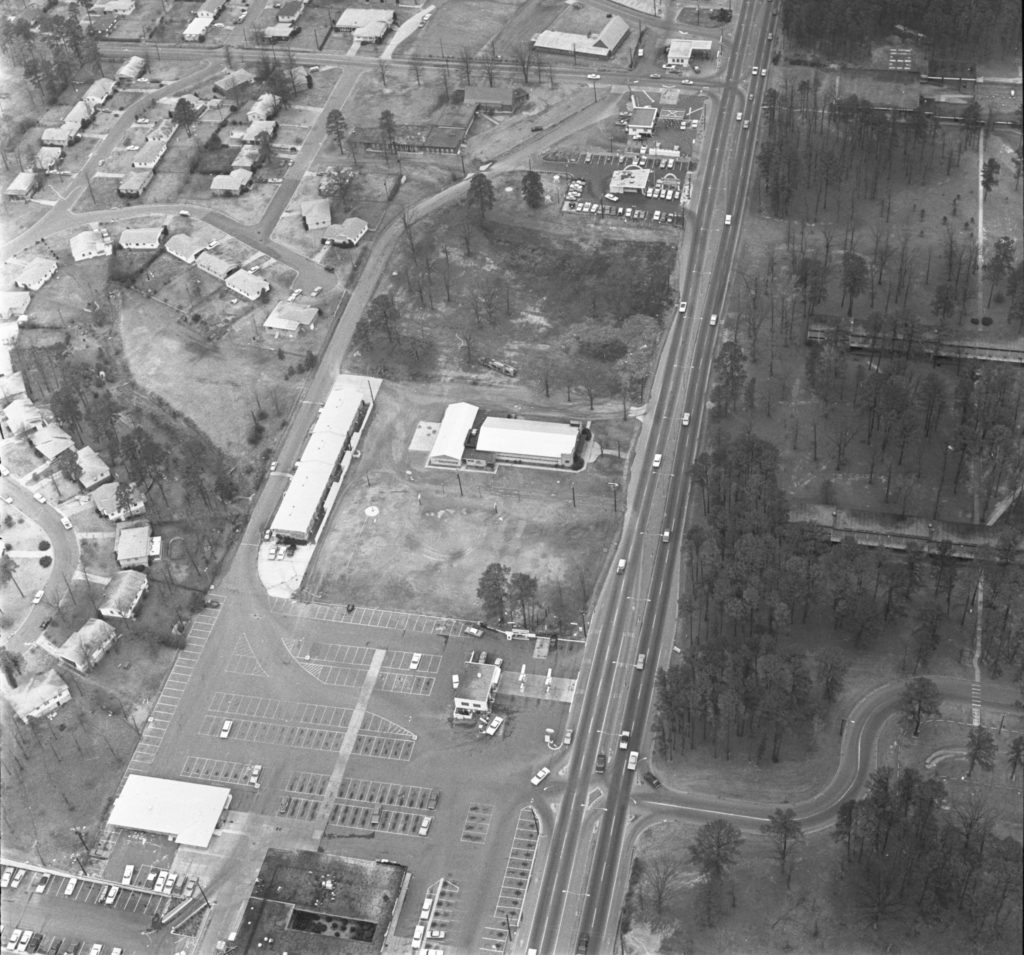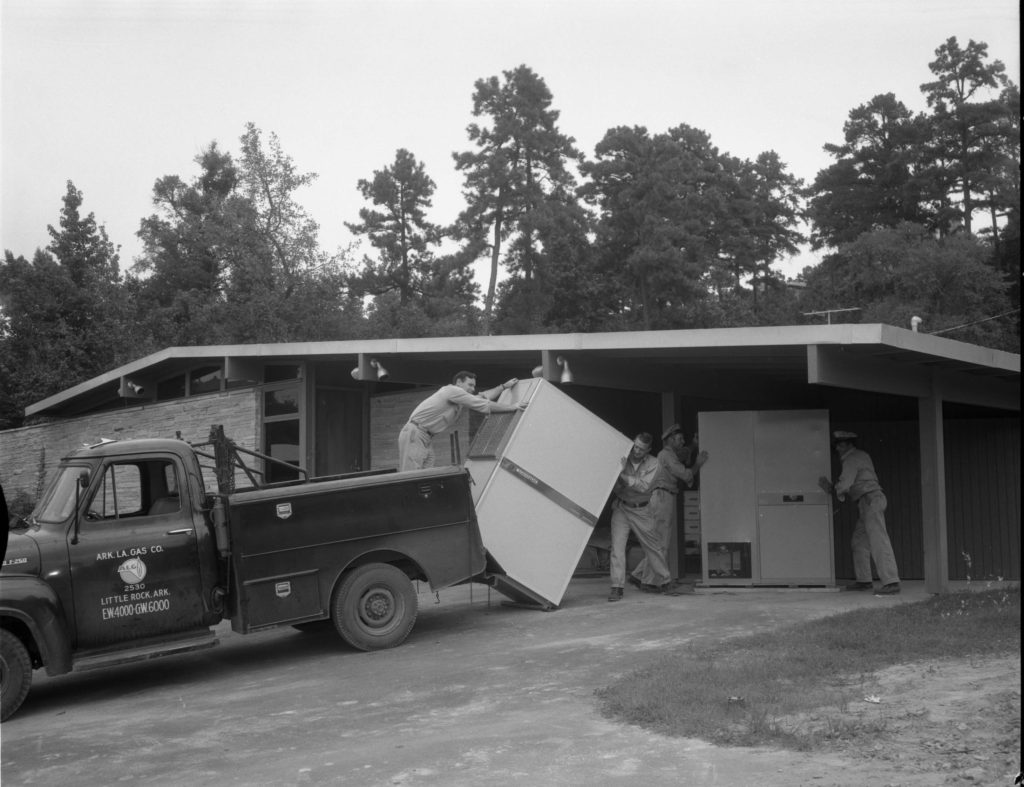By Andrew McClain
I’m Andrew, a Little Rock native, freelance journalist and archival assistant working on the Mapping Renewal project. During my first postgraduate career as a delivery driver, I saw far corners of Little Rock that I had never seen in all my years as a resident, and became fascinated with learning why the city is shaped the way it is. This project has provided me with an opportunity to find some answers.
The charming quality of the infrastructure and housing stock near the historic heart of Little Rock has always made me wonder why parts of it seem like a ghost town. It’s easy to come to the conclusion that the American phenomenon known as “white flight” is the driving factor, but I’ve been searching for the supporting factors.
As Little Rock grew in the 1950s, it expanded westward. Just as the streetcar allowed Pulaski Heights to become Little Rock’s western edge suburb some 40 years earlier, the automobile allowed developments like Broadmoor to push that boundary further west.
One proponent of this movement was local entrepreneur and owner of Rebsamen Ford, Raymond Rebsamen, who said:
“The automobile has us in its grip. This is the age of decentralization, from the factory in its landscaped acreage to the regional shopping center out in the middle of nowhere, from the drive-in theater to the drive-in branch bank. The use of land has changed to meet our own pattern of living, and our cities must change too, to accommodate us the way we want to live, or our cities will die.“
In 1947, Rebsamen donated 80 acres of his personal hunting grounds to Little Rock Junior College for a new campus. This wooded area four miles south of Cammack Village was accessible by a gravel road called Hayes Street (now University). In 1949, Little Rock Junior College relocated there from its 14th Street campus downtown. [1]

Across the United States, the postwar demand for single-family housing resulted in a boom in residential developments. Elbert L. Fausett was a prolific Little Rock developer by the early 1950s, responsible for 12 subdivisions around Central Arkansas. In 1953, Fausett purchased 190 acres of Rebsamen’s land on the other side of Hayes from the Little Rock Junior College campus.
The first houses in the subdivision known as Broadmoor were built later that year, and the first residents moved in. Homes could be purchased for $11,500 to $21,600, with eighteen different plans to choose from. Fausett had a metal shop, a cabinet shop and a sawmill on site so that homes could be assembled quickly. The Broadmoor homes were advertised as being the first to include central heat and air. This unique fact has attracted the attention of the Quapaw Quarter Association, starting a conversation about the possibility of Broadmoor being considered a historic district. [2] By 1957, the subdivision had 553 homes.
From the time the first residents moved in to Broadmoor in 1953 until 1965, the neighborhood was comprised of entirely white residents, until an African American lawyer named John Walker purchased the house at 105 Broadmoor. His neighbors reacted by breaking his front window and setting his shrubs on fire before he moved his family in.
One Broadmoor resident said ““The policy in Broadmoor is to ignore the Walkers. If no one says anything to them I think it will be only a matter of time before they move somewhere else.”
Walker responded by organizing 12 black families to buy lots in the adjacent University Park neighborhood in order to promote diversity. Many of those families still live there, and the demographic makeup of the area is one of the most diverse in the city of Little Rock.

For additional information:
- Williams, C. Fred. Historic Little Rock: An Illustrated History. San Antonio, TX: Historical Pub. Network, 2008. (p. 75)
- O’Neal, Rachel. “Quapaw Expands into mid Century.” Arkansas Online. September 23, 2018. Accessed December 07, 2018. https://www.arkansasonline.com/news/2018/sep/23/quapaw-expands-into-mid-century-2018092/
- Kirk, John A., and Jess Porter. “The Roots of Little Rock’s Segregated Neighborhoods,” Arkansas Times, July 10, 2014, pp. 12–16. Online at http://www.arktimes.com/arkansas/the-roots-of-little-rocks-segregated-neighborhoods/Content?oid=3383298
- “QQA 2018 Mid-Century Modern Tour.” Quapaw Quarter Association. https://www.quapaw.com/what_we_do/qqa-2018-mid-century-modern-tour.html